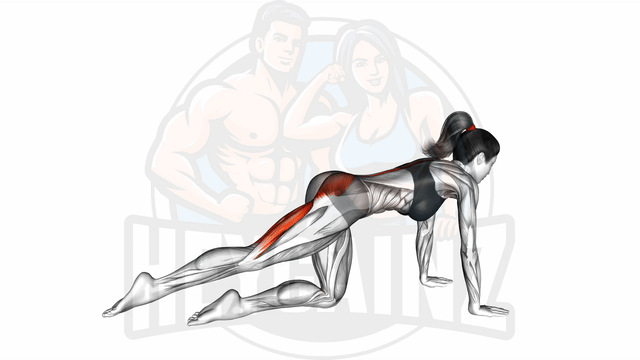
Instructions:
- 1Begin in a kneeling position with your knees hip-width apart and your hands at your sides
- 2Lower your body back, keeping your back straight
- 3Push back up to the original position
- 4Immediately lower back again, creating a 'pulsing' motion
- 5Repeat the process for desired number of repetitions
Tips:
- Ensure your back remains straight throughout the exercise
- Focus on the glute muscles during the pulsing motion
- Avoid leaning forward or to the sides
- Keep a consistent speed during the movement
Kneeling Pulse: A Dynamic Exercise for Your Hips
The Kneeling Pulse is an effective bodyweight exercise specifically designed to target the erector spinae and gluteus maximus. Ideal for adding variety to your workout routine, this exercise can be performed anywhere without the need for special equipment. Whether you're a beginner or experienced in fitness, kneeling pulses can help enhance strength and stability in the hips.
During the kneeling pulse, you will engage your hip muscles effectively, promoting flexibility and strength in the surrounding areas. Some may refer to this exercise as kneeling adductor pulse or kneeling abductor pulse depending on the focus of the movement, while others might relate it to kneeling leg pulses or kneeling squat pulse. Regardless of the name, the core movement remains the same.
Instructions for Performing the Kneeling Pulse
- Begin in a kneeling position with your knees hip-width apart.
- Bend slightly forward, keeping your core engaged and your back straight.
- Lower one leg out to the side, ensuring your hip and knee are aligned.
- Pulse the leg up and down in a controlled manner, feeling the tension in your glutes and hip muscles.
- Perform the desired number of repetitions before switching to the other leg.
Tips for an Effective Kneeling Pulse
- Maintain Form: Keep your torso upright and avoid leaning excessively to prevent strain.
- Controlled Movements: Focus on slow and steady pulses to maximize muscle engagement.
- Breathing: Remember to breathe evenly throughout the exercise to maintain focus and control.
- Variations: Experiment with kneeling hip flexor pulses or incorporate kneeling lunge stretch pulses to diversify your routine.
As you explore the kneeling pulse and its variations, you may also encounter discussions related to knee health, such as what it means to feel a pulse in your knee or ways to check for a pulse in that area. While these topics may seem unrelated to the exercise itself, it’s important to listen to your body and consult a professional if you have any concerns about knee discomfort or health.
Incorporate the kneeling pulse into your fitness regime to enrich your workouts, promote hip strength, and develop a deeper awareness of body mechanics.